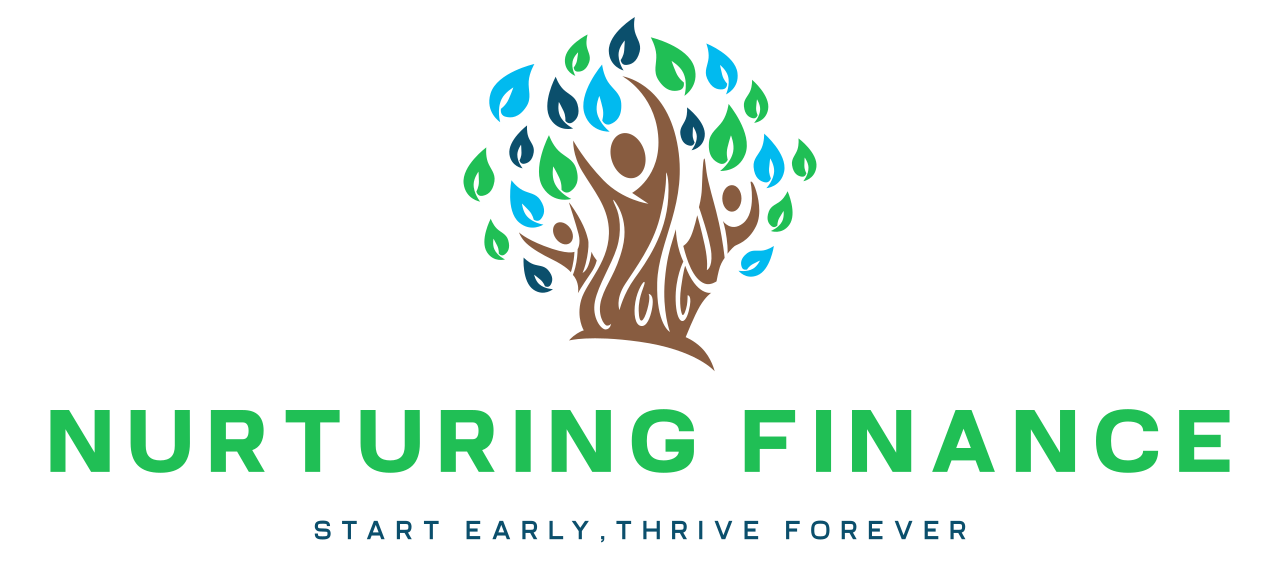“With 78% of American workers living paycheck to paycheck, mastering finances seems more crucial than ever. What if financial expertise could be as intuitive as driving a car? That is the core of Fin-Lit Reflex. Here, financial literacy isn’t just learned; it’s lived.
That’s why starting early when teaching children about money is crucial. It’s not just about your kids’ financial literacy – it’s about their financial reflex. It’s about making financial literacy so fundamental and ingrained in kids that it becomes a reflex. And that’s what the Fin-Lit Reflex is all about. This financial literacy helps empower our kids to navigate the treacherous waters of personal finance, instilling good money habits at a young age that will serve them well into their adult lives.
Key Takeaways:
- Fin-Lit Reflex: Position financial literacy as an instinctual skill, essential from a young age, covering comprehensive aspects like money management, spending, and investing.
- Importance of Early Education: Stress early financial education to avoid missteps, increase confidence, and prepare children for future financial responsibilities.
- Benefits Highlighted: Enhanced decision-making, readiness for financial responsibilities, and entrepreneurship encouragement among children.
- Educational Strategies: Encourage open money discussions, lead by example, use educational games, and involve children in financial decisions
- School Curriculum Integration: Advocate for practical financial skills to be taught in schools using real-world examples and hands-on experiences.
- Parental Guidance: Emphasize the role of parents in initiating financial conversations to normalize financial literacy for future empowerment.
Podcast: Building FinLit Reflex: Instinctive Financial Literacy for the Next Generation
Table of Contents
ToggleUnderstanding Fin-Lit Reflex
Fin-Lit Reflex, in essence, encapsulates the idea of financial knowledge and skills becoming so ingrained and automatic that they are effortlessly applied in everyday life. It doesn’t merely involve teaching kids about money or how to balance a budget. It’s much more than that. It’s about teaching children to make informed financial decisions that positively impact their lives.Importance of Teaching Financial Literacy to Kids
-
Start Early: The earlier children learn about financial literacy, the more chances they have to avoid financial missteps and grow their wealth as they age. Giving them an allowance at a young age can be a perfect start.
-
Instill Value of Money: Teaching kids about money helps them understand that it doesn’t just appear magically. They learn that earning money results from hard work and that each purchase is a decision about how to use their money best.
-
Effective Money Management: Kids who learn financial literacy skills early can better understand how to save, spend, and invest their money wisely. They can make more informed choices about their money.
-
Preventing Debt: Financial education can help children understand the consequences of borrowing and the importance of maintaining good credit. This prevents them from falling into a spiral of debt.
-
Financial Independence: The ultimate goal of teaching financial literacy is to help children grow into financially independent adults. This includes the ability to make wise financial decisions, such as investing in higher education, purchasing a house, or saving for retirement.
Benefits of Developing Fin-Lit Reflex
Increased Confidence
Incorporating financial education from a young age enhances children’s confidence in dealing with money matters. They feel equipped and comfortable talking about money, understanding the importance of savings, and making spending decisions.Better Decision Making
Children who have fully understood financial literacy for kids are better equipped to make sound financial decisions. They can compare prices, understand the value for money, and recognize a good deal when they see one.Improving Future Prospects
Teaching children money management from a young age sets them up for success. They are better prepared to handle their finances, whether managing a student loan, buying their first car, or investing in a property.Encourage Entrepreneurship
Teaching children the value of money and the way financial systems work can inspire them to start their own ventures and understand the economic forces that drive a business.Strategies for Cultivating Fin-Lit Reflex in Children
As parents, it’s our responsibility to give our children a strong financial foundation. But how can we do it effectively? Let’s start with open conversations. Talking about money shouldn’t be a taboo topic at home. Discuss financial matters with your children openly and honestly, giving them a real-world perspective on earning, spending, and saving.Incorporating Financial Education into School Curriculum
-
Build a solid foundation: Teach kids the basics of money—where it comes from, what it’s used for, and why saving is important.
-
Teach practical skills: Integrate lessons on budgeting, setting financial goals, and understanding the difference between needs and wants.
-
Use real-world examples: Give kids a chance to handle money through class projects or school fundraisers to practice making financial decisions.
Tools and Resources for Teaching Kids about Financial Literacy
Numerous resources are available to help parents instill good financial habits in their children. Start by using daily opportunities to talk about money with your kids. This could be during a trip to the grocery store, while doing chores at home, or even when planning a family vacation. Next, consider using games or apps designed to teach financial literacy. These tools make learning about money fun and engaging for children. They often involve real-world scenarios that help kids understand how to manage money wisely.Real-Life Examples of Fin-Lit Reflex in Action
Consider the story of young Billy, who received a generous cash gift from his grandmother on his 10th birthday. Instead of spending all of that money immediately, Billy decided to save a portion of it. His parents taught him the importance of saving for future needs and wants. Next, there was Sarah, a high school student who decided to take up a part-time job during her summer vacation. She wanted to save money for her upcoming college expenses. Sarah had been taught from a young age the value of money and the idea of earning it through hard work.Nurturing a Positive Money Mindset in Children
Cultivating a positive money mindset is foundational to financial literacy. Teach your kids that money is a tool, not a goal. They should aim to earn money to support their dreams, not vice versa. Highlight the difference between ‘needs’ and ‘wants’, teaching children to prioritize their expenditures accordingly. Encourage children and teens to ask questions about money. This boosts their financial knowledge and makes them more comfortable dealing with financial matters. Discourage materialism and, instead, focus on the value of experiences and relationships over possessions.Conclusion
In conclusion, financial literacy for kids is not just about saving or budgeting. It’s about instilling in them the Fin-Lit Reflex, a deep understanding of how to earn, manage, and grow money. When we empower our children with this knowledge, we set them up for success in a world where financial decisions shape our lives.
Frequently Asked Questions: How to Develop Consistency in Teaching Financial Literacy to Youth
1. How important is it to teach kids about financial literacy at a young age?
Teaching kids financial literacy at a young age is crucial as it helps them understand the value of money and develop healthy money habits early on. By starting early, you can instill foundational financial literacy skills that will guide them in making informed financial decisions in the future.2. What are some effective ways to teach kids about financial literacy for kids and money management?
To teach your kids about financial literacy, consider using age-appropriate resources and engaging in hands-on learning experiences such as creating a budget, giving them an allowance to practice money management, and encouraging them to ask questions about personal finance.3. How can parents ensure consistency in teaching financial literacy to their children and teens?
Consistency is key when it comes to teaching children about financial literacy. Parents can establish a regular schedule for financial lessons, reinforce good money habits through chore allocations and setting a balance between spending and saving.4. Why is it important to start teaching your kids about money management early on?
Starting early helps children understand the importance of money and develop healthy financial habits that will benefit them in the long term. By introducing them to concepts like earning money and the value of money

